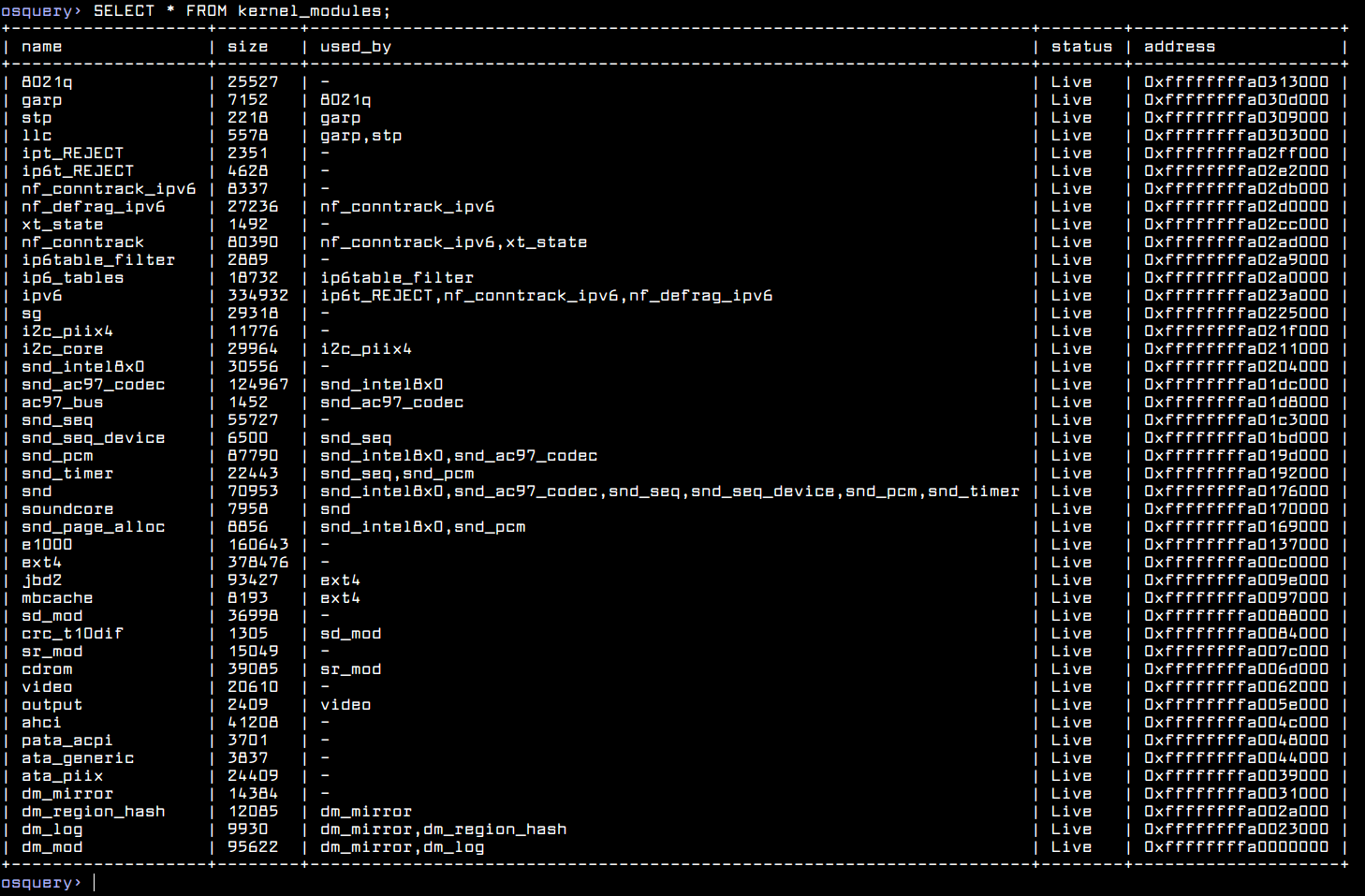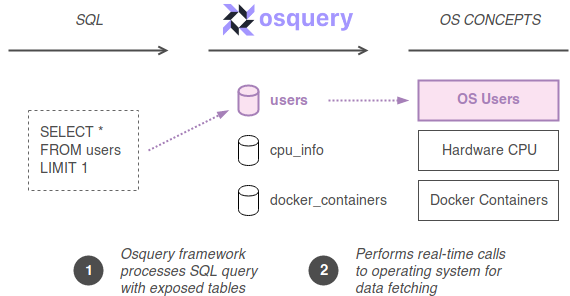Download addimat driver. Osquery is an operating system instrumentation framework for Linux that exposes this operating system as a high-performance relational database so that SQL queries can explore the operating system data. With osquery, SQL tables represent abstract concepts such as running processes, loaded kernel modules, open network connections, browser plugins, hardware events, or file hashes.


AT&T Cybersecurity recommends that you install the AlienVault Agent on your Linux hosts to monitor endpoints and collect logs. Alternatively, you can use osquery to collect data and send them to USM Anywhere through syslog.
Infrastructure reliability, or compliance, osquery gives you the ability to empower and inform a broad set of organizations within your company. Osqueryi is the osquery interactive query console/shell. In this mode, it is completely standalone, does not communicate with a daemon, and does not need to run as an administrator (although some tables may return fewer results when running as non-administrator). Osquery is a framework we’ve used to create a few products and tools. Osquery’s modular codebase allows us to take advantage of existing concepts in new and interesting ways. We’re releasing several tools as a part of the open source release and we have more planned. Osquery is an operating system instrumentation framework for Windows, OS X (macOS), Linux, and FreeBSD. The tools make low-level operating system analytics and monitoring both performant and intuitive. Osquery exposes an operating system as a high-performance relational database.

Osquery Arm
Note: Do not run osquery in parallel with the AlienVault Agent because it will interfere with the agent and cause USM Anywhere not to parse the data it receives.
Osquery Facebook
You must have sudoA program for UNIX-like computer operating systems that allows users to run programs with the security privileges of another user, by default the superuser. privileges to complete the following procedure.


To collect logs from Linux using osquery
- If you do not yet have osquery, download it and follow the instructions appropriate for your operating system.
Create a text file called osquery.conf and copy-paste the contents of this file into it.
Important: After you copy-paste the text, make sure to edit it so that all strings with equals signs (=) in them remain on the same line. Otherwise, this procedure will fail.
- Save osquery.conf and copy it to /etc/osquery/.
Note: We recommend leaving the queries created by default, but you can create your own osquery configuration.
- Start the osquery daemon:
If you have not already done so, configure syslog to send data to the USM Anywhere Sensor. See Linux Log Collection with Syslog for instructions.
This should include restarting the syslog service.
Verify that you can see osquery events in USM Anywhere.
